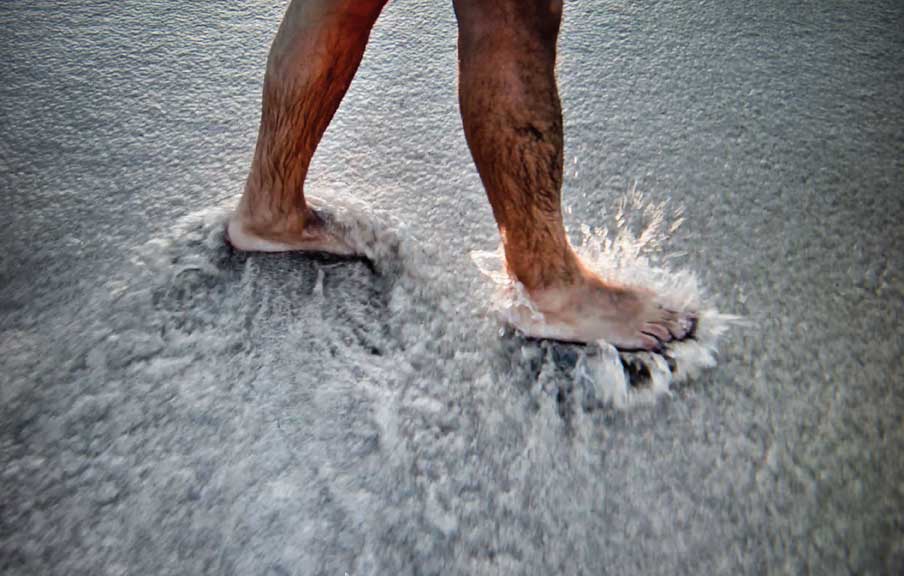« Reviews
Tracing Antilles: A Shared Voyage
Polk Museum of Art - Lakeland, Fla.
By Raisa Clavijo
“Tracing Antilles” is the result of Humberto Castro’s study of the historical evolution of the Caribbean, as well as an investigation of his own heredity, identity and experience as a ‘nomad’ living in Cuba, France and South Florida. In his analysis, the Caribbean is a place of cultural encounters, conflicts, fusions and migrations, the setting for the encounter between Old Europe and the New World more than 500 years ago.
The first exhibition of this project took place in 2014 at the Frost Art Museum in Miami. This second exhibition, at the Polk Art Museum in Lakeland, Fla., continues the visual exploration of Castro, who covers the historical, cultural and social evolution in the Antilles, in this case in the Greater Antilles (Cuba, Hispaniola and Puerto Rico). For the next phase of the project, he plans to continue his research in Jamaica, the Cayman Islands and Trinidad & Tobago.

Humberto Castro, Tracing Antilles, 2013, installation with wooden canoe and video, dimensions variable. Courtesy of the artist.
The project takes its name from the installation Tracing Antilles, also included in the presentation at the Frost-an old wooden canoe, behind which a video is projected on the wall, showing images of waves breaking on a beach in the Caribbean. The history of this region is the history of migrations that began with those of the Tainos and Caribs in canoes from South America, a human flow that little by little inhabited and diversified the populace of the islands.
“Tracing Antilles” does not pretend to follow a chronological order of historic events; rather, it is a recounting of Castro’s impressions and firsthand experiences living in that region, as well as the cultural influences that shape the Caribbean psyche. The exhibition assembles paintings, drawings, photographs and installations, as well as objects found and collected by him, many with archeological value.
Castro was born and educated in Cuba and spent the first ten years of his professional career there, as well. In 1989, he emigrated to Paris, where he lived and worked for 10 years. In 1999, he moved to Miami, a city with a very strong Cuban community. Miami confronted him with his past and his memories of the Caribbean, and this inspired him to examine his own personal experience as an immigrant, as part of the history of that geographic area.
Throughout this project, Castro addresses not only the first migrations of pre-Hispanic cultures from different points in the Americas toward the Caribbean, but also the extermination of indigenous cultures during colonization, the birth of new cultures, the resulting fusion of traditions, religious beliefs and ways of viewing the world produced in those first moments. He also covers the political disarray prevailing in almost the entire region, the product of a succession of dictatorships and corrupt governments, of misguided economic strategies that have played havoc with the natural resources and development of the islands. “Unfortunately, I have found that the story does not change. History continues to repeat itself,” Castro said in his statement.

Humberto Castro, Political Bestiary of the Caribbean, 2013, oil and acrylic on canvas, 85” x 99.” Courtesy of the artist.
The exhibition also includes an extensive collection of photographs taken by the artist during his trips, which include snapshots of society in the Antilles, above all in Haiti and Cuba. In these photos, he has not only captured the lifestyle of the people, but also the color of chaos, which dominates everything, that has been established as the foundation of life in these territories devastated by ambition, by political instability, and plunged into a never-ending spiral of poverty.
Castro delves into history and the past like an anthropologist. At the same time, his personal journey emulates the thousands of similar voyages undertaken by so many other individuals during the course of the region’s history. Consequently, the pieces he assembled in the exhibition tell rich, insightful stories of resilience and survival.
(October 15, 2016 - January 15, 2017)
Filed Under: Reviews




































Leave a Reply
You must be logged in to post a comment.